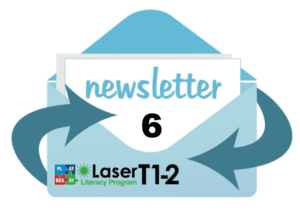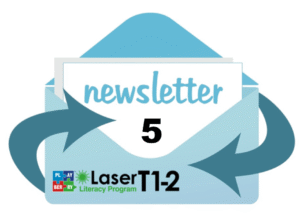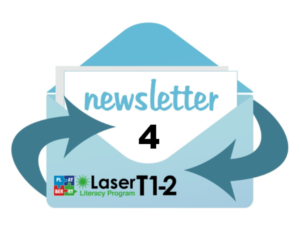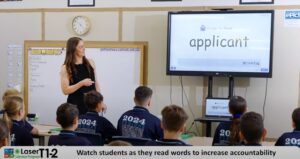What are Rosenshine's Principles of Instruction?

Bill Hansberry
Co-Director Playberry Laser
Barak Rosenshine, an American educational psychologist, developed Rosenshine’s Principles of Instruction. His principles are based on empirical research and observations of effective teaching practices. These principles aim to provide teachers with a framework for effective instructional strategies. Rosenshine began work in the 1970s and 1980s, conducting studies and synthesising research findings on effective teaching methods. His work culminated in identifying principles that he observed to be present in successful classrooms.
Rosenshine’s Principles of Instruction have gained momentum, prompting us all to consider whether our teaching is compatible with human cognitive architecture. Their common sense and simplicity strike anyone who reads them. Rosenshine’s Principles provide a clear roadmap for improving students’ retention and application of what we teach them.
Rosenshine’s Principles of Instruction reflect fundamental elements that have stood the test of time and are rooted in the foundations of successful teaching practices. For me, Rosenshine’s principles are highly congruent with the methodologies for teaching individuals with dyslexia developed by Samuel Orton and Anna Gillingham in the 1920s. The enduring nature of these effective teaching principles underscores that regardless of educational advancements and evolving methodologies, certain fundamental elements of excellent instruction remain constant.
Over this series of posts, I will lay out each of Roshenshine’s ten principles as outlined in an article Rosenshine wrote for American Educator in the Spring of 2012 and elaborate slightly on each of these, bringing some of my thoughts and insights to them, particularly in how they relate to how many of us in the evidence-informed teaching of literacy space have relearned to teach structured literacy lessons and how this explicit and routine heavy teaching has successfully spilt into other curriculum areas. I want to show how we’ve been adhering to these principles of instruction all along.
Principle 8: Provide scaffolds for difficult tasks: The teacher provides students with temporary supports and scaffolds to assist them when they learn difficult tasks.
“Research Findings
Investigators have successfully provided students with scaffolds, or additional supports, to help them learn difficult tasks. A scaffold is a temporary support that is used to assist a learner. These scaffolds are gradually withdrawn as learners become more competent, although some students may continue to rely on scaffolds when they encounter particularly difficult problems. Providing scaffolds is a form of guided practice… (Rosenshine)
What is a scaffold?
In building and construction, a scaffold is an external structure that is erected to hold up another structure while it is being built. After the structure has been properly secured and firmed up, the scaffold is taken away. In educational contexts, a scaffold refers to a temporary support or structure provided by a teacher to assist learners in achieving specific learning goals or completing tasks that are initially beyond their current abilities.
Most of us think of writing frames when we think of scaffolds. My first introduction to scaffolds was the genre frames that I used (quite ineffectively, I may add) to teach students the parts of narratives, expositions, reports, recounts and the various other writing forms that they needed to master, hopefully before secondary school. Paragraph frames have been used for years to help students build the paragraphs that form essays, and many secondary English teachers know that they will need to teach or reteach students how to write paragraphs and string them together cohesively before they ask for entire essays.
Scaffolded teaching of writing has attracted the attention of schools that are on the Science of Reading journey and tends to be the next thing teachers grapple with once they have reached proficiency with the explicit teaching of the written code. Hochman and Wexler’s ‘The Writing Revolution™’, along with the outstanding work of the late great William Van Cleave (’Writing Matters’) as well as notable others, scaffold writing instruction incredibly well and provide teachers with detailed guidance on how to build students’ writing skills. Playberry Laser T1-2 will soon have a writing component.
Many schools are using these existing resources as a springboard to develop in-house scaffolded writing programs that focus on knowledge-rich content that finally, after long last, actually give students a knowledge base to write from instead of just asking them to hammer away on writing frames, inserting their own scant knowledge. Finally (sigh), we are moving beyond expositions on whether homework should exist or if school uniforms should be compulsory!
Scaffolding has always been at the centre of effective instruction. It’s another tried and true principle of effective teaching that has ridden back into town on the back of the structured literacy movement. Excellent teaching has always involved approaches such as the teacher modelling steps to a problem – at the board, providing partially completed maths problems or sentences for students to complete, or thinking aloud so students can hear their mental processes (showing how an expert thinks).
Scaffolding difficult tasks picks up on some of Rosenshine’s other principles. If you’ve read my other posts, you’re probably beginning to see Rosenshine’s principles as more of a Venn diagram than a list.
In essence, scaffolding involves breaking down complex tasks into smaller, more manageable steps, providing guidance and support as students work towards mastery. Key aspects of this principle include:
Gradual Release of Responsibility:
Teachers gradually transfer responsibility for learning from themselves to the students. Initially, they provide extensive support (scaffolding), then gradually reduce this support (remove scaffolding) as students gain confidence and competence. See my post on Rosenshine’s 5th Principle.
Clear Instructions and Modeling:
Teachers provide clear, step-by-step instructions (See post on Rosenshine’s 2nd Principle) and demonstrate how to complete tasks effectively. Modeling helps students understand what is expected of them and how to approach the task.
Feedback and Guidance:
Teachers offer timely feedback and guidance to help students identify errors, correct misunderstandings, and improve their performance. This feedback should be specific, constructive, and actionable. See posts on Rosenshine’s 3rd and 7th Principles.
Scaffolding Techniques:
Various scaffolding techniques can be employed, such as providing graphic organizers, offering prompts or cues, breaking tasks into smaller steps, offering examples and non-examples, and using questioning techniques to guide thinking.
Differentiation:
Scaffolding should be tailored to meet the diverse needs of learners, providing additional support for struggling students while challenging more advanced learners appropriately.
Multiple Exposures as a form of Scaffolding
Multiple exposures to content that needs to be memorised and automated is an often-overlooked form of scaffolding. Personalised student packs of cards containing GPCs, spelling and grammar concepts have been a part of Orton-Gillingham intervention programs since their beginnings.
Orton and Gillingham understood that students with dyslexia would need daily exposure and retrieval practice of letters, sounds and important concepts through the use of cards that would only be removed from a student’s pack once the student could reliably retrieve it with ease (next to no cognitive load associated with the retrieval).

Most Orton-Gillingham programs use card decks to help build mastery. The necessary phonic information for a beginning Gillingham card deck was aptly described by Wood (1976, p. 133) as, “A packet of thin paper squares containing every symbol that a child needs to learn in order to get through the primary and elementary grades, a packet only a third of an inch in depth… ” That “packet of thin paper squares” holds a key to literacy for many students.
(Sheffield, 1991:42)[1]
[1] The structured flexibility of Orton-Gillingham, BB Sheffield in Annals of Dyslexia, Vol 41, January 1991
Many fine programs have grown from the Orton-Gillingham tradition, Playberry-Laser T1-2 and Playberry T3 being among these. In classroom instruction, the personalised card packs that Sheffield refers to take the form of a class deck that is kept in line with what has been taught and what needs additional practice. Like an intervention teacher with a single student, the classroom teacher remains sensitive to which cards the class is able to retrieve effortlessly, which cards can be omitted for only sporadic practice and which cards must remain in the class deck a little longer.

On-screen slides with carefully crafted animations have become another form that these cards take to guide students through retrieval and application tasks. In Playberry Laser T1-2, as well as other quality structured literacy programs, these slides scaffold the memorisation and application of GPCs, spelling rules and grammar concepts and use a fading and retrieval schedule to ensure students are integrating information into long-term memory.
Scaffolding difficult tasks doesn’t only happen in the literacy space. Many schools have taken what they’ve learned from literacy instruction and applied the same successful principles to all subject areas, where particular types of declarative and procedural knowledge must be learned. I have been excited to see the changes made in mathematics instruction in schools that started out with a structured literacy revolution.
Teachers know student learning when they see it, so, of course, they have begun to incorporate successful methods right across the curriculum. Every one of these methods, as it turns out, can be linked directly back to ground zero – Rosenshine’s Principles.
Playberry Laser T1-2 is a teacher-supportive multisensory literacy resource for primary teachers to support their teaching in line with research. We’ve taken the planning and resource design load to free teachers to focus on building content knowledge and sharpening their delivery in line with Rosenshine’s Principles of Instruction.
References:
Rosenshine, B. (2012). Principles of instruction: Research-based strategies that all teachers should know. [online] American Educator, American Educator, pp.12–39. Available at: https://www.aft.org/sites/default/files/periodicals/Rosenshine.pdf
Sheffield, BB (1991). The structured flexibility of Orton-Gillingham. Annals of Dyslexia. Volume 41, January 1991






